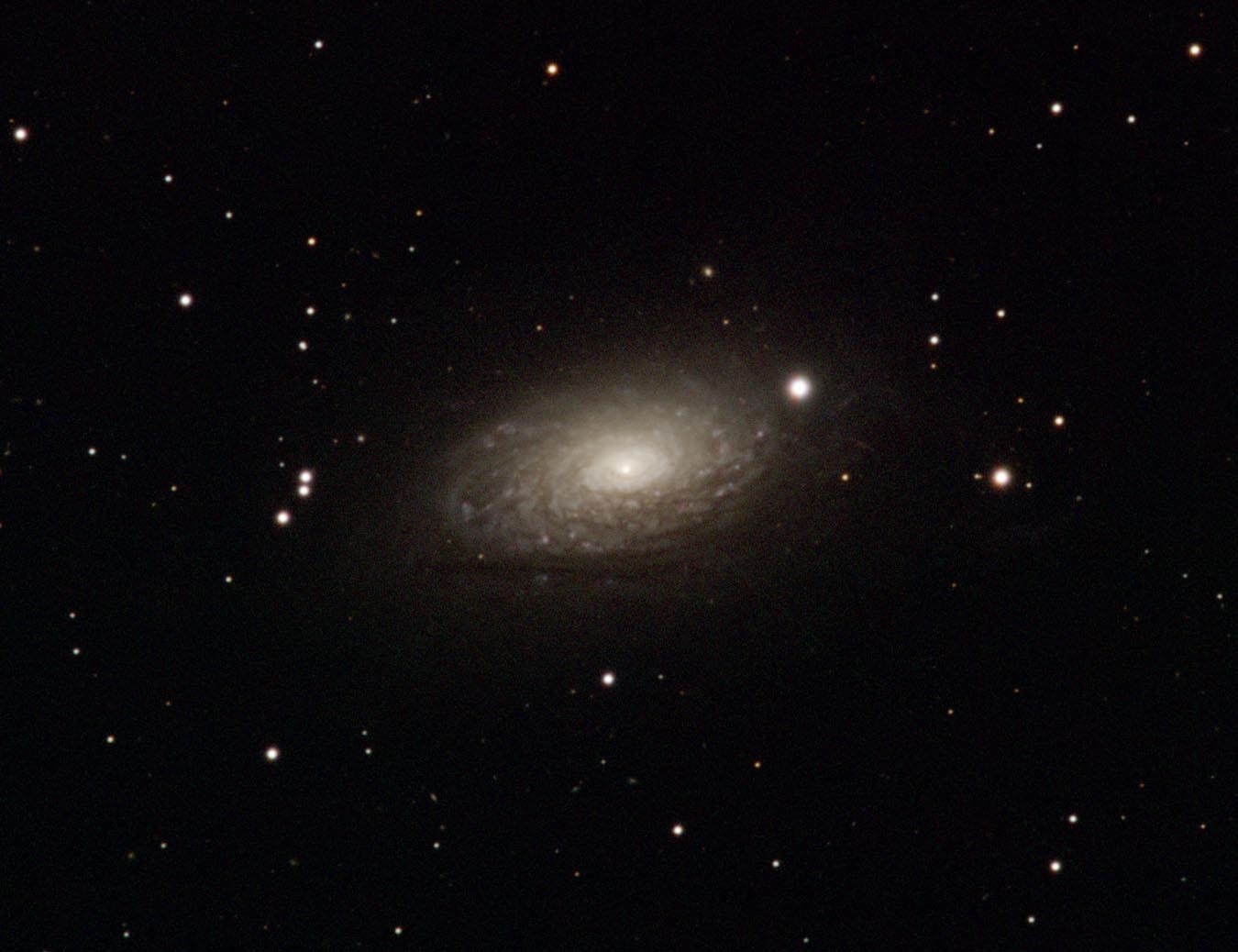- M 63 The Sunflower Galaxy
The fragmented, "flocculent" multiple-arm structure of M 63 (NGC 5055) has caused it to be called the "Sunflower Galaxy". This complex arm structure is thought to similar to that of our own Milky Way galaxy. The appearance of this structure is accentuated by multiple lanes of dark dust, and a broader lane of dust encircles the outer periphery of the galaxy. Lighter, slightly pinkish HII regions dot the galaxy's disk. The core of M 63 is very bright and stellar in appearance, and stands out even in small telescopes. M63 is located around 27 million LY away in a group of galaxies that includes M 51, the "Whirlpool Galaxy". It has a diameter of just under 100,000 LY, which makes it a bit smaller than our Milky Way. M 63 was the first galaxy discovered by Messier's colleague Pierre Mechain. He discovered it while following a bright comet in 1779. Messier himself observed M 63 on the 14th of June, 1779. In his notes, he remarked that it appeared similar to his object No. 59, which is a large elliptical galaxy in Virgo. The spiral structure of M 63 wasn't determined until the 1800's with observations by Lord Rosse and others.
|










 Return to SOCO Image Gallery
Return to SOCO Image Gallery
 Return to SOCO Main Page
Return to SOCO Main Page